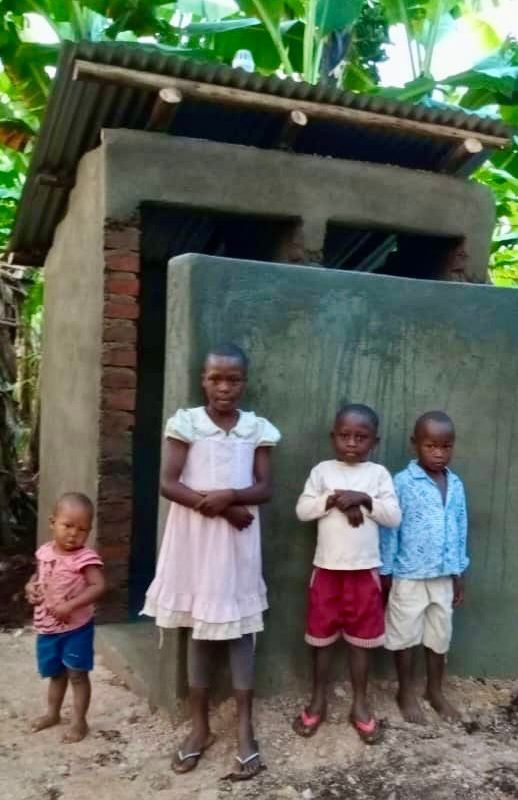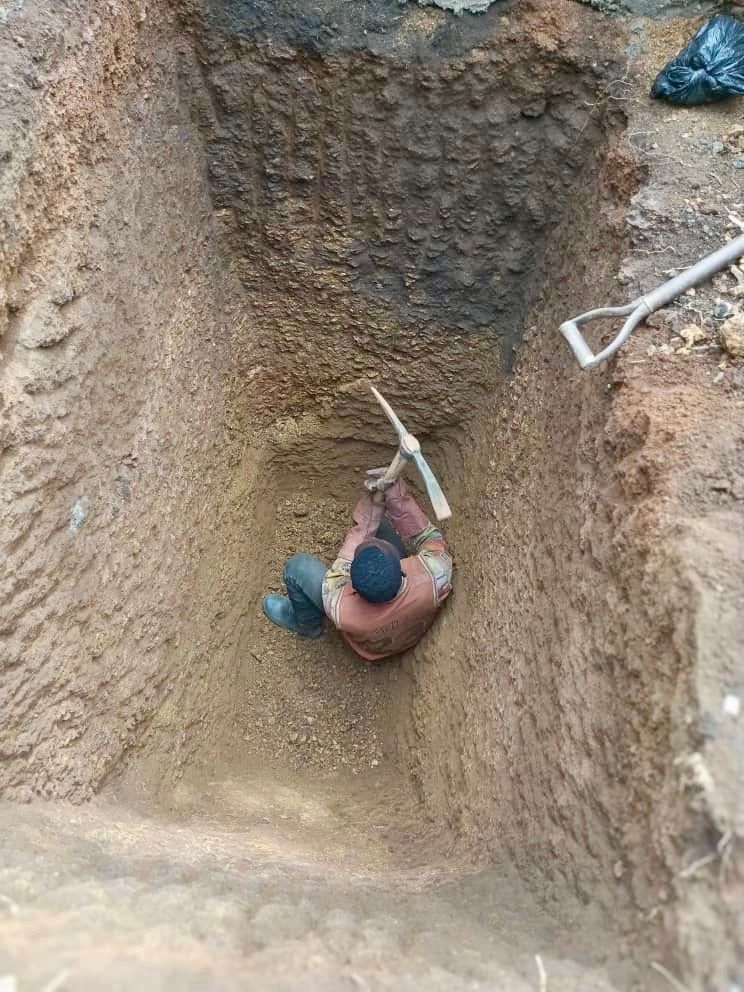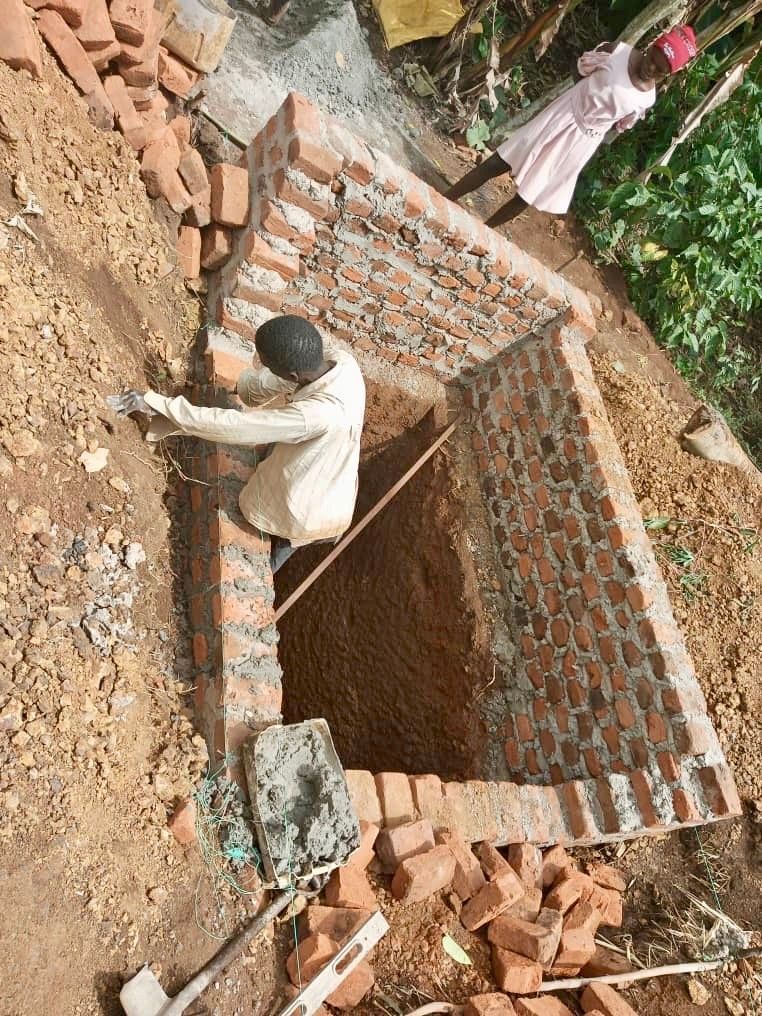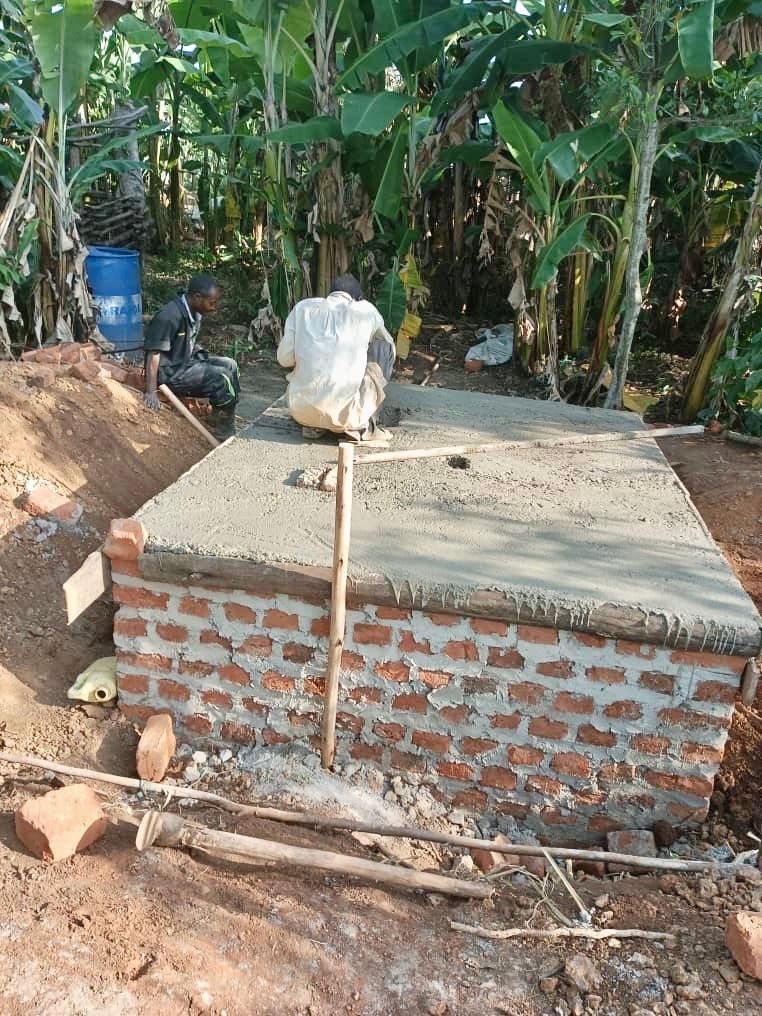Pit Latrines project
Proper pit latrines are more than just a basic necessity; they are a cornerstone of public health, environmental protection, economic development, dignity, and overall community well-being

What are pitlatrines?
A pit latrine, also known as a pit toilet, is a simple and often rudimentary type of toilet facility commonly used in rural and low-income areas. It consists of a deep hole or pit in the ground, covered by a slab or floor with a hole through which users can defecate or urinate. Here are the key components and features of a pit latrine:
- Pit: A deep hole dug into the ground, typically at least 3 meters (10 feet) deep and 1 meter (3 feet) in diameter, to contain human waste.
- Slab: A platform or slab made of concrete, wood, or other materials, placed over the pit. The slab has a hole in it through which users defecate.
- Superstructure: A shelter or structure built around the slab to provide privacy and protection from the elements. This can be made from materials such as wood, metal, plastic, or natural materials like thatch or mud.
- Ventilation Pipe: Some pit latrines are equipped with a ventilation pipe (a "ventilated improved pit latrine" or VIP latrine) to reduce odors and flies. The pipe allows gases to escape from the pit and helps in maintaining a healthier environment around the latrine.
- Cover: A lid or cover for the hole in the slab can be used to minimize odors and prevent insects from entering the pit when the latrine is not in use.
Pit latrines are a basic form of sanitation and can significantly improve hygiene and health in areas without access to more advanced sanitation systems. They are relatively inexpensive to construct and maintain but need to be properly managed to avoid environmental contamination and health risks. When the pit fills up, it can either be emptied, or a new pit can be dug, and the old one can be covered and left to decompose.
Importance of Pit latrines
Sanitation is a critical aspect of public health and well-being in the community of Ndegeya. Among various sanitation facilities, pit latrines play a pivotal role in ensuring hygienic conditions, reducing disease transmission, and promoting a healthier environment.
One of the most significant benefits of proper pit latrines is the reduction in the spread of infectious diseases. Inadequate sanitation facilities are a breeding ground for pathogens that cause diarrhea, cholera, typhoid, and other waterborne illnesses. According to the World Health Organization (WHO), nearly 88% of diarrhea-related deaths are attributed to unsafe water, inadequate sanitation, and poor hygiene. Properly constructed and maintained pit latrines help break the transmission cycle of these diseases, significantly lowering morbidity and mortality rates, especially among children.
Improper disposal of human waste can lead to environmental contamination, affecting soil and water quality. This not only impacts human health but also the ecosystem. Proper pit latrines ensure that waste is contained and decomposed safely underground, preventing the contamination of surface and groundwater sources. This is crucial in rural areas where communities rely on natural water sources for drinking, cooking, and irrigation.
Investing in proper sanitation facilities like pit latrines can have substantial economic benefits. The cost of healthcare due to preventable sanitation-related diseases can be a significant burden on families and the national healthcare system. By reducing the incidence of these diseases, communities can save on medical expenses and improve overall productivity. Moreover, improved sanitation facilities can enhance school attendance and performance, as children are less likely to fall ill and miss school days.
Access to proper sanitation facilities is a matter of dignity and human rights. In many communities, especially for women and girls, the lack of private and safe latrines can lead to embarrassment, discomfort, and even physical danger. Girls may avoid attending school during menstruation due to inadequate facilities, and women may risk their safety when defecating in the open at night. Proper pit latrines provide a safe, private, and dignified space for everyone, promoting gender equality and community well-being.
Proper sanitation is foundational for community development. When communities have access to safe and hygienic latrines, the overall quality of life improves. This fosters a sense of pride and responsibility among residents, encouraging them to maintain and improve their surroundings. Additionally, education on proper sanitation practices often accompanies the construction of pit latrines, leading to better hygiene habits and a more informed community.
Through our foundation, we provide two pit latrine blocks that will serve multiple families in the surrounding area. While this approach is slightly more costly, it ensures that no single family is favoured, allowing everyone equal access to the facility.






